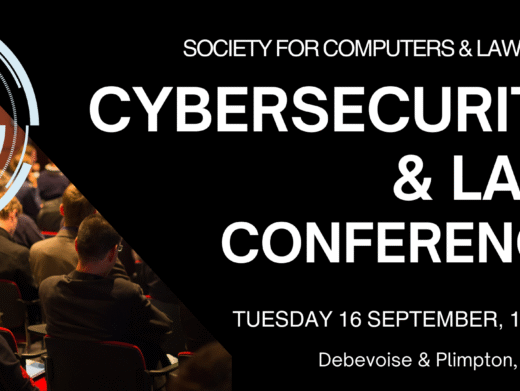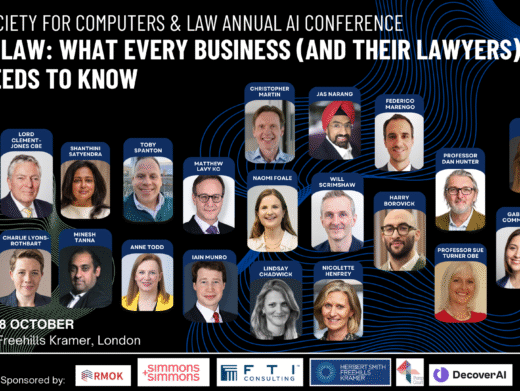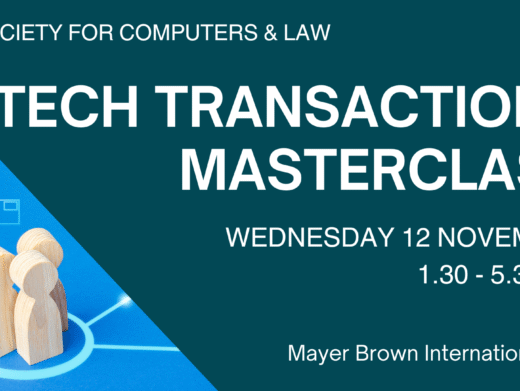Technomed Ltd and Another v Bluecrest Health
Screening Ltd and Another [2017] EWHC 2142 (Ch) was an action for
infringement of database right and copyright in an electrocardiogram (‘ECG’)
analysis and reporting system known as ECG Cloud.
The System
The claimants, Technomed Ltd and Technomed
Telemedicine Ltd, had developed the system. The companies supply ECG
equipment and use the ECG Cloud to analyse ECG readings and report the
results to doctors or health screening companies such as the first defendant Bluecrest Health
Screening Ltd (Bluecrest). David Stone, sitting as a Deputy High Court
judge, described the operation of the system as follows (at [26]):
‘the process of using ECG Cloud
starts with a mobile ECG machine which takes a reading from a patient. The
patient data are then inputted into ECG Cloud through a web-based processing
system. The patient data are reviewed by a qualified cardiac physiologist who
selects from a range of options from menus. The menus correspond to each ECG
variable in a database.’
It was this database in which the claimants claimed
copyright and database right. Mr Stone continued (at [26]):
‘The Database comprises a set of
classifications of relevant physical characteristics shown by ECGs (“the
Classifications”), such as ventricular rate or PR interval. Ventricular rate is
the resting heart rate – with slow or fast heart rates potentially indicating
cardiac abnormalities. PR interval is the time an electrical impulse takes to
travel from the sinus node to the ventricles – readings outside the normal
range for the patient’s age can indicate cardiac abnormalities. For each
Classification, the Database contains a number of options for how the
characteristic tends to manifest in ECG readings (“the Options”). For example,
with ventricular rate, the Options are listed as “normal”, “bradycardia”
(slow), “tachycardia” (fast) and “uncertain”. Within ECG Cloud, Classifications
are presented to users as a series of drop down menus, with the Options
comprising the menu items. Associated with each Option is a risk status, or “Traffic
Light”, which is intended to reflect best medical practice for ECG screening
purposes, and some explanatory text to provide further information to the
patient on the ECG reading (“the Patient Definitions”).’
ECG Cloud outputs data in XML in a standardized format that
is used to generate a report for distribution to the patient or his or her GP
in a graphical user interface with two diagrams of the heart. One of those
diagrams shows the flow of blood through the heart while the other shows the
flow of electricity through the organ. There is also a diagram of an ECG wave.
The Contract between Technomed and Bluecrest
On 31 Oct 2012, the claimants agreed to supply heart
screening services to Bluecrest in a format in which they could be delivered
directly to patients rather than their doctors as part of a comprehensive
health check. At Bluecrest’s request, Technomed emailed Bluecrest
with electronic copies of the two hearts diagram, the wave diagram, and a
pdf document containing the database, that is, to say the classifications,
options, traffic lights and patient definitions described above.
The Breakdown of Relations
Towards the end of 2013, Bluecrest had fallen heavily into
arrears and asked the claimants to reduce the costs of their services from
£5.25 per ECG to £4.00. Technomed’s response was to stop supplying ECG reports
to Bluecrest for a while but they later offered Bluecrest a new contract with
ECG reports at a lower price. By that time, however, Bluecrest had found the
second defendant, Express Diagnostics Ltd, trading as ‘Cardio Analytics’ (Express) and
had agreed to transfer its business to that company.
Express’s System
The learned judge noted (at [44]) that, although Express’s
system operated very differently from Technomed’s, the output was almost
identical. Express and Bluecrest made a conscious decision to match closely the
wording used by the Technomed companies and early reports
included verbatim or almost verbatim the two hearts diagram, the wave
diagram, classifications, options, traffic lights and patient definitions
relevant to that patient drawn from the materials that had been sent by
Technomed. Following a letter from Technomed warning Express not to infringe
its intellectual property rights, Express and Bluecrest began to rewrite their
reports dropping the diagrams and much of the text.
The Claim
Proceedings were issued in March 2015 in which the Technomed
companies claimed infringement of:
- ·
the sui generis database right in the
classifications, options, traffic lights, patient definitions and other matter
the claimants had emailed to Bluecrest; - ·
copyright in those materials, either as a
database or other type of literary work; - ·
copyright in the claimants’ software (although
this claim has been narrowed to a claim of: - ·
copyright in the XML Format as a literary work;
and - ·
copyright in the XML Format and/or the Database
as preparatory design material for a computer program); - ·
copyright in the explanatory materials as a
literary work; - ·
copyright in the patient definitions as a
literary work, taken either together with the associated classification and
option or each patient definition individually; and - ·
copyright in the two hearts diagram and in the
wave diagram as artistic works.
They claimed the usual remedies for copyright and database
right infringement including additional damages under s 97(2) of the Copyright,
Designs and Patents Act 1997. Bluecrest and Express denied the subsistence of
copyright or database right and, in some cases, infringement while Bluecrest
also counterclaimed for breach of the 2012 contract.
At a case management hearing, Mrs Justice Proudman
identified a list of issues for trial which were later reduced by agreement to
18. The counterclaim was severed from the claim with a direction for the
intellectual property issues to be tried first and for the counterclaim to be
heard on another occasion.
Subsistence of Database Right
The first question for the judge was whether the classifications,
options, traffic lights, patient definitions and other matter that the
claimants had emailed to Bluecrest constituted a database within the meaning of
Article 1(2) of the Database Directive (Directive 96/9/EC of the European Parliament and of the Council
of 11 March 1996 on the legal protection of databases (OJ L 77, 27.3.1996,
p. 20–28)).
He considered:
- ·
the CJEU’s judgment in C-444/02, Fixtures Marketing Limited v Organismos
Prognostikon Agonon Podosfairou (OPAP) [2004]
EUECJ C-444/02 at [20]-[36] - ·
the Court of Appeal’s judgment in Football
Dataco Ltd and Others v Stan James Plc and Others [2013] EWCA Civ 27
and - ·
Mr Justice Arnold’s judgment in Forensic
Telecommunications Services Ltd v West Yorkshire Police [2011] EWHC
2892 (Ch)
and concluded that they did constitute a database.
Counsel for the claimants had submitted that a database need
not have a complex structure or be large or have a sophisticated method of
indexing. He submitted that the spreadsheet met the definition, as did the pdf
form of that document. The defendants approached the question slightly
differently. They focussed on the pdf form of the spreadsheet, arguing that
whilst it is a collection of independent materials, those materials are not
separable from one another without their informative values being affected. The
defendants argued that a pdf can never be a database as it is more like a
photograph than a database.
The judge disagreed. The spreadsheet importantly linked a
classification, an option, traffic lights and a patient definition. Individual
classifications were accessible, either by reading the pdf with the human eye,
or accessing the spreadsheet electronically. As for the point that the pdf was
static, there was nothing to prevent the recipient from re-typing the data into
another spreadsheet.
He concluded (at [71]):
‘The Database is a collection of
independent works, data or other materials arranged in a systematic or
methodical way and individually accessible by electronic or other means. In my
judgment, it is a database within the meaning of the Database Directive.’
That did not, of course, mean that database right
automatically subsisted in those materials. Article 7(1) of the Directive
requires substantial investment in the obtaining, verification or presentation
of the contents of the database. Counsel for the claimants reminded the judge
of the time and effort spent by their management on compiling the database
which, the judge agreed, was substantial.
He held (at [77]):
‘There has been substantial
investment in the obtaining and verification and presentation of the contents
of the Database, assessed qualitatively. Technomed has sought to prevent
extraction and/or re-utilisation of the whole or a substantial part of the contents
of the Database. In my judgment, sui generis database right subsists
in the Database.’
Infringement of Database Right
Mr Stone reminded himself that a database right is infringed
when its contents have been extracted or re-utilized and that ‘extraction’ and ‘re-utilization’
are defined in Article 7(2) of the Directive. He found that the database had
been copied in its entirety. As copying connoted
the permanent or temporary transfer of the contents of the database to another
medium, it followed that those contents had also been extracted. Moreover, each and every time those contents
had been copied, there was also a repeated extraction of those contents within
the meaning of Article 7(5). He, therefore, found that the database right
subsisting in the materials that he had held to be a database had been
infringed.
Copyright in the Database
Having found that those materials constituted a ‘database’
for the purposes of database right, it followed that they must also be a ‘database’
for the purposes of copyright. As he had also found that those contents had
been copied, it followed that the copyright had been infringed unless he could
be persuaded that they were not original (that is to say, the
author’s intellectual creation|) within the meaning of Article 3(1).
The judge reminded himself of Mr Justice Floyd’s four-step
test for database copyright in Football
Dataco Limited v Brittens Pools Limited [2010] EWHC 841 (Ch):
‘It seems to me that the task for
the court is as follows:
i) Identify the data which is
collected and arranged in the database;
ii) Analyse the work which goes into the creation of the database by collecting
and arranging the data so identified, to isolate that work which is properly
regarded as selection and arrangement;
iii) Ask whether the work of selection and arrangement was the author’s own
intellectual creation and in particular whether it involved the author’s
judgment, taste or discretion;
iv) Finally one should ask whether the work is quantitatively sufficient to
attract copyright protection.’
Applying that test and considering the evidence of the
claimants on the collection and arrangement of the database, he was satisfied
that the originality test had been cleared. It followed that the copyright
subsisting in the database had been infringed.
The judge added (at [102]) that if he was wrong to find that
copyright subsisted in the database as a database then copyright would subsist
in the pdf file as a literary work and that such copyrights would be
infringed.
XML Format
Mr Stone found that copyright subsisted in the XML format
not as a program but as a literary work, that it had been copied and had
therefore been infringed. He was not, however, persuaded that the format or
indeed the database was a preparatory work for a computer program.
Copyright in the Explanatory Materials
The judge found that the explanatory materials were a
copyright work, that they had been copied and that the copyright subsisting in
those works had been infringed. It had been argued that they had been copied
from an antecedent work by Boston Scientific but, while there was indeed some
similarities between those works, they were not enough to exclude a finding of
originality.
Patient Definitions
Much the same arguments were made as for the explanatory
materials and the decision was the same. Mr Stone found that copyright
subsisted in those definitions and it was conceded that there had been copying,
at least until July 2014. His lordship found that there had been several
amendments and that the latest explanatory materials did not infringe.
The Diagrams
The judge found that the diagrams were original artistic
works in which copyright subsisted and they had been copied.
Flagrancy
Finally Mr Stone held that the copying of the diagrams and
explanatory materials had been flagrant within the meaning of s 97(2) of
the CDPA since there was a deliberate decision to copy Technomed’s work. There
was, however, no other evidence of scandalous conduct or deceit to the same
extent.
Comment
This is a very careful and thorough judgment. Its importance
lies in the discussion of what constitutes a database for the purpose
of Article 1(2) of the Directive. Mr Justice Arnold had cast the net quite wide
in Forensic Telecommunications. In finding that a pdf file could be a database
Mr Stone appears to have cast it even further. Having said that, the language
of Article 1(2) is quite wide ranging and Fixtures Marketing invites a
broad interpretation. In this case, the claimants were able to use database
rights to protect a user interface for which purpose it could prove to be a
very useful tool.
Jane Lambert
is a barrister practising intellectual property, technology, media,
entertainment and competition law from 4-5 Gray’s Inn Square. This is an edited version of an
article which first appeared as a blog post on the NIPC blog.




